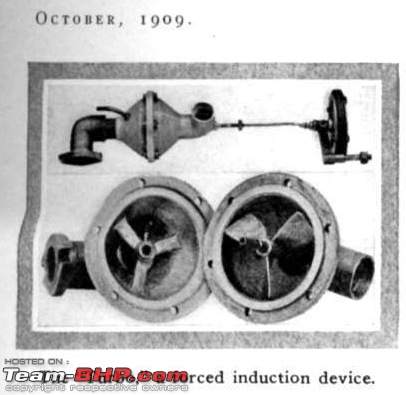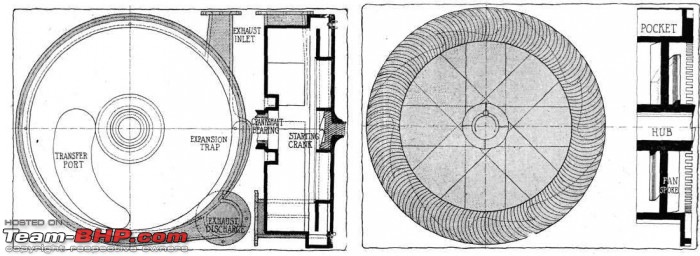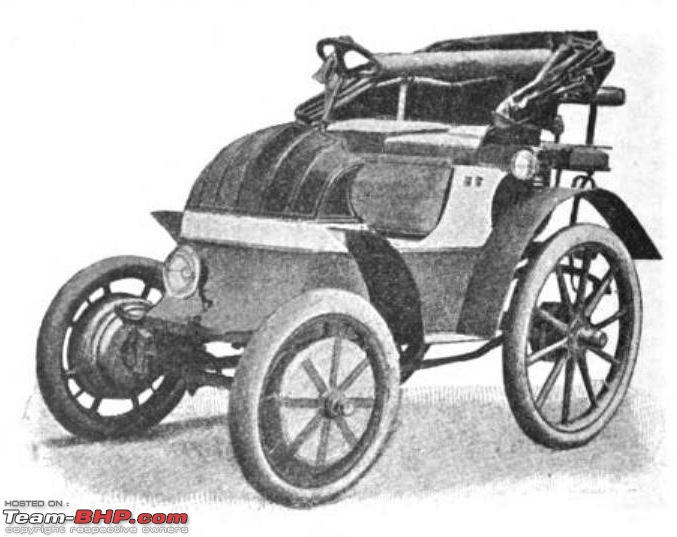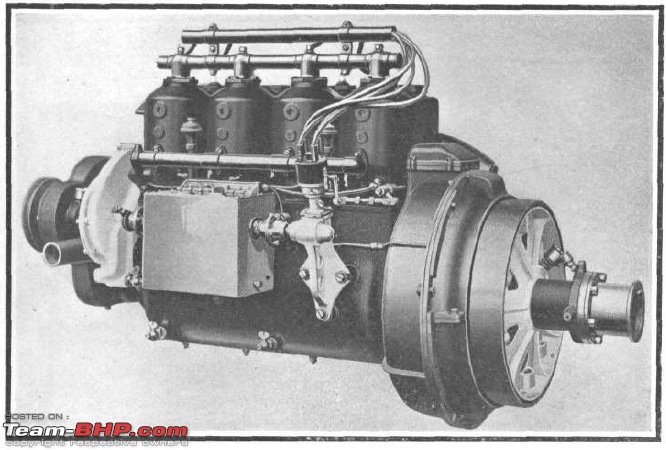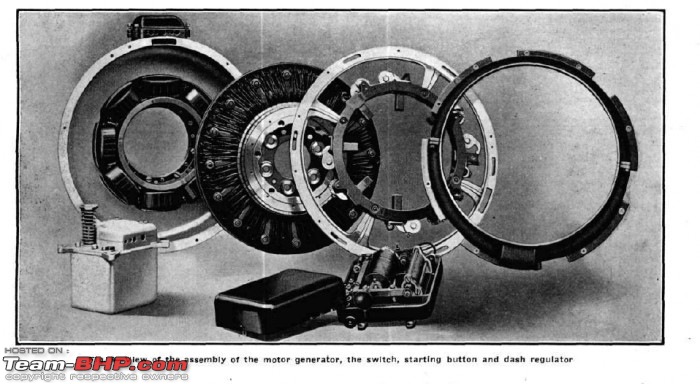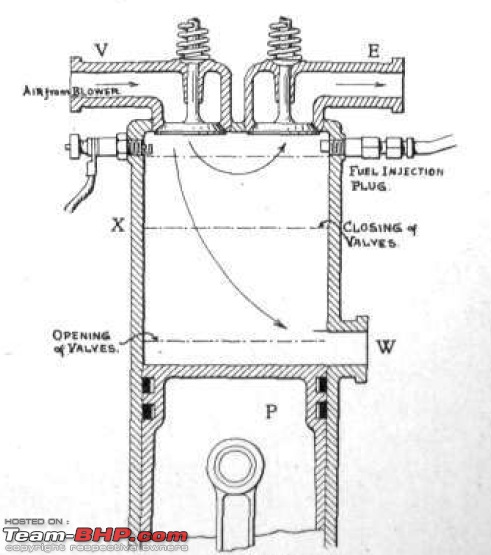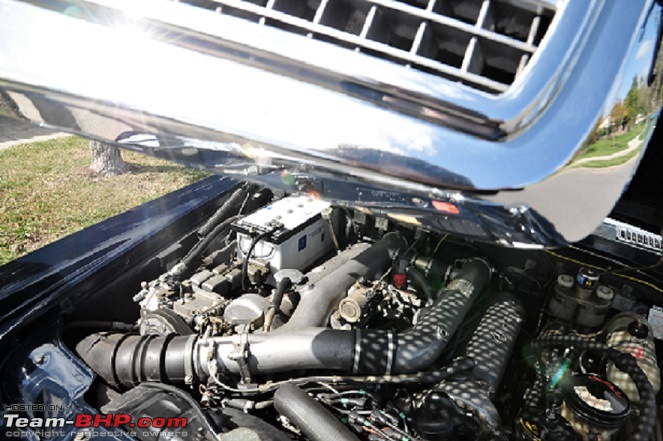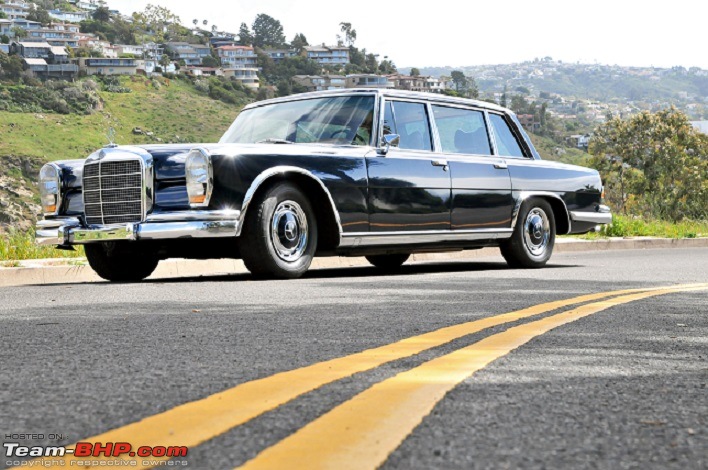| |||||||
| Search Forums |
| Advanced Search |
| Go to Page... |
 |
| Search this Thread |  44,297 views |
| | #61 |
| Distinguished - BHPian  | Re: Automobile Technologies of the Past - A Revisit I believe that on October 7th Henry Ford's greatest gift to mankind, the assembly line, will turn 100 years old. What a landmark event! |
| |  (4)
Thanks (4)
Thanks
 |
| The following 4 BHPians Thank karlosdeville for this useful post: | FINTAIL, kasli, KPS, Rehaan |
| |
| | #62 |
| Senior - BHPian Join Date: Aug 2005 Location: BOMBAY
Posts: 1,821
Thanked: 2,005 Times
| |
| |  ()
Thanks ()
Thanks
 |
| | #63 | |
| Distinguished - BHPian  Join Date: Mar 2008 Location: Ann Arbor
Posts: 2,934
Thanked: 8,551 Times
| Re: Automobile Technologies of the Past - A Revisit Quote:
OOps, wish I hadn't said that! Last edited by travancore : 27th September 2013 at 02:48. | |
| |  ()
Thanks ()
Thanks
 |
| | #64 |
| Distinguished - BHPian  | Re: Automobile Technologies of the Past - A Revisit Here are some early technologies This simple mechanism is a speedo worm in a very early Cadillac 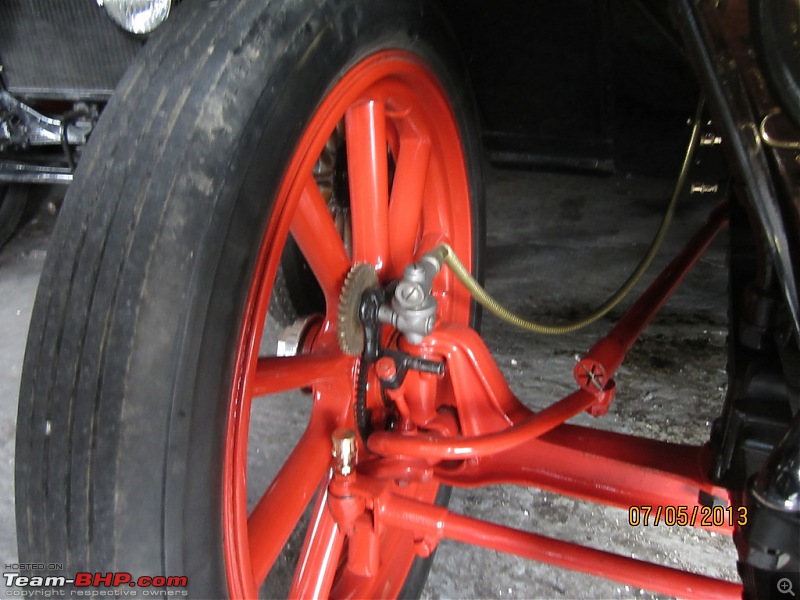 Here is a on very early Oldmobile with a wooden steering. Note the upright steering position  The Olds' sports lamps(like lanterns) for its headlights  Cheers KPS |
| |  (5)
Thanks (5)
Thanks
 |
| The following 5 BHPians Thank KPS for this useful post: | Bulldogji, manishalive, Rehaan, srinand, travancore |
| | #65 |
| Distinguished - BHPian  | Re: Automobile Technologies of the Past - A Revisit I was seeing the pictures post by Mr Jatti on the Thakral Museum, the Ford Fairlane Convertible with Retractable Hard Top jumps at you. Here is a youtube video of the 1957 Fairlane roof being opened. Cheers KPS Last edited by Rehaan : 12th November 2013 at 15:30. Reason: Embedding youtube video |
| |  (1)
Thanks (1)
Thanks
 |
| The following BHPian Thanks KPS for this useful post: | Rehaan |
| | #66 |
| BHPian | Re: Automobile Technologies of the Past - A Revisit A feature that was available during muscle car era for improving traction in snow. 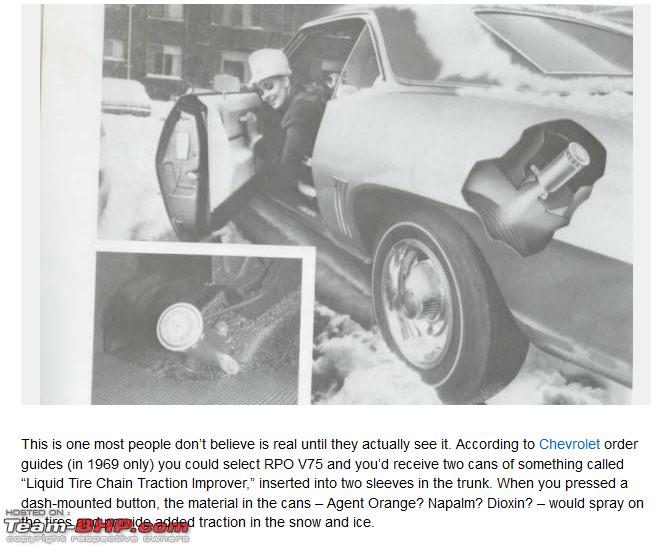 |
| |  (3)
Thanks (3)
Thanks
 |
| The following 3 BHPians Thank josejoseph for this useful post: | KPS, manishalive, Rehaan |
| | #67 | |
| Distinguished - BHPian  | Re: Automobile Technologies of the Past - A Revisit The chain drive as seen in the 1906 Napier of HEH The Nizam of Hyderabad 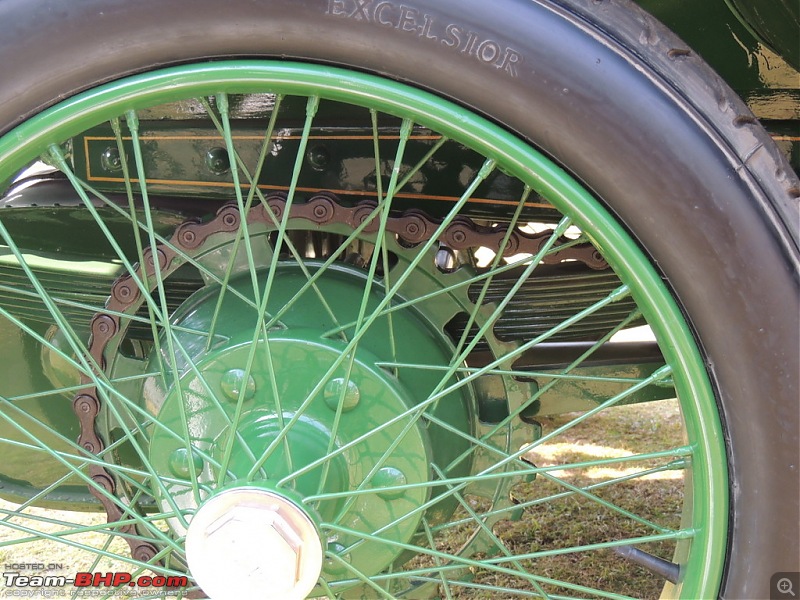 Quote:
Cheers KPS | |
| |  (3)
Thanks (3)
Thanks
 |
| The following 3 BHPians Thank KPS for this useful post: | manishalive, srinand, Stanher |
| | #68 |
| Distinguished - BHPian  | Re: Automobile Technologies of the Past - A Revisit The tail lights as seen in the The ex-Maharajah of Mysore, 1911 Rolls-Royce 40/50hp Silver Ghost Ceremonial Victoria was a lamp which had a red glass. We used have a similar Lucas kerosene lamp which was stolen from our house in the 1990's. Initial lamps were carbide lamps and subsequently kerosene ones were seen.  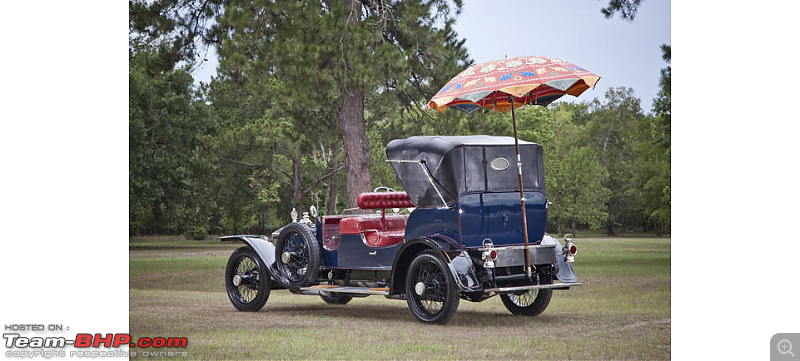 Source :http://www.bonhams.com/auctions/19289/lot/221/ The umbrella technology as seen in the car obliviously was not sustainable and rarely seen  Cheers KPS |
| |  (3)
Thanks (3)
Thanks
 |
| The following 3 BHPians Thank KPS for this useful post: | Rehaan, srinand, Stanher |
| | #69 | |||
| Distinguished - BHPian  | Re: Automobile Technologies of the Past - A Revisit Quote:
  See the car smoking oil  Quote:
Well here is youtube to the rescue on how a sleeve valve works. Quote:
Cheers KPS Last edited by moralfibre : 1st February 2014 at 17:19. Reason: Embedding youtube video | |||
| |  (5)
Thanks (5)
Thanks
 |
| The following 5 BHPians Thank KPS for this useful post: | FINTAIL, harit, karlosdeville, srinand, travancore |
| | #70 |
| BHPian Join Date: Apr 2014 Location: GOT/BLR
Posts: 59
Thanked: 66 Times
| Re: Automobile Technologies of the Past - A Revisit Note to mods: I hope this is the correct thread to post this. If not please do move it. Nothing New: 7 modern car technologies that are actually 100 years old I often say, flippantly, that the industry is just now starting to master the technologies of a century ago. That’s been more an impression than a statement of fact; I recall seeing many things in early publications and thinking, “Wow, I had no idea they did that so soon,” but if pressed, I wouldn’t be able to provide examples. Time to remedy that, with a quick survey of some ideas that were before their time. 1. Turbocharging The idea of turbo-compressing seems to come from the 1890s and became widely known in less than a decade, starting around 1900. By about 1905, centrifugal compression was in use in marine engines and other heavy-duty applications. That same year, Swiss engineer Dr. Alfred Büchi patented an exhaust-driven turbocharger in what we’d consider a modern configuration. England and France were the hotbeds of turbo research, however, with a large variety of engine configurations and external devices, all creating forced induction. The word “turbo” itself appears more than a century ago, on the English device shown (I haven’t been able to learn more about it). Sold as an add-on, we’d probably call it a supercharger today, as it was driven by a shaft from a friction wheel in contact with the flywheel. Actually, we’d probably call it a waste of money, as it couldn’t possibly have had any benefit, but the idea was sound. That’s not to say Americans didn’t have the idea of turning a turbine with exhaust gas; devices such as the High exhaust motor replaced the flywheel, hypothetically returning force directly to the crankshaft. Auburn, Cord and Duesenberg, among others, used supercharged forced induction before World War II, sometimes to great success, but exhaust-driven turbocharging had to wait for the Corvair to see mass production. 2. Hybrids This is my favorite early technology, and, no mistake, it is very early. The 1900 Lohner-Porsche petrol-electric – which had a Mercedes or Panhard four-cylinder connected to a dynamo, powering two front-wheel hub motors – is certainly the most famous, but despite repeated efforts, hub motors have yet to see practical production. But there were innumerable others with other solutions, one of which, Rambler, had what seems to have turned out to be THE solution: Integrated motor assist. Rambler developed a motor/generator to replace the flywheel, originally simply as a starter. Early starters were enormous and heavy, but by connecting the new unit directly to the crankshaft in the 1912-’13 (I think) Cross Country, they simplified things. Made by United States Heating and Lighting Company (U.S.L.), it was completely automated: It functioned as a motor when starting, drawing from a 24-volt storage battery, then switched to generator mode when the engine engaged, with a regulator to prevent overcharging. The big spinning armature served as the flywheel. So far, this is just a clever starter, but there was one difference: Because there was no gear reduction, you could safely use it to get the car under way. In fact, taking the car up to about 5 MPH before starting seems to have been a preferred way of getting it going. That’s right: At low speeds, it was an electric, then switched to gas. Right down to the location of the generator, this is the way a Honda Insight works today. Even that wasn’t original – in about 1898, both Pieper in Belgium and Patton Motor Co. in Chicago had electric assist: A small engine was kept running at constant speed, driving a dynamo and charging a battery. When conditions demanded more power than the engine was putting out – hillclimbing, for instance, the dynamo automatically switched to assist mode. 3. Power brakes When you drive an early car for the first time, the weak brakes make themselves known immediately. You’re forgiven for thinking they were an afterthought, but the issue was actually the tires. Even a skimpy contracting band could lock up slick three-inch-wide rubber, but that didn’t mean there weren’t inventors thinking up better solutions than rods and leather belts. Like hydraulic power brakes. That there is the master cylinder from John Unser’s 1904 patent (#794,382) for hydraulic brakes. “Hydraulic,” in this case, meant “operated by the pressure of air or other similar fluid”; his pump and reservoir could be adapted for liquids. For traction engines, there was even an outlet at the end to hook up to your trailer, like you do with a Perterbilt today. This stuff doesn’t spring up out of whole cloth, and I could undoubtedly find someone discussing the use of some rail-braking mechanism for road trains, but you get the idea. 4. Disc brakes Because clutch disc brakes were in common use, it’s been very tricky to pin down the first application of wheel disc brakes. However, the earliest version is acknowledged to be the F.W. Lanchester’s 1902 patent, and by 1903, it was being used very successfully in Lanchester automobiles. Given Fred Lanchester’s background and track record of startling invention, it entirely possible he came up with the idea. By 1915, Metz was offering a hub-mounted version of multiplate disc clutch brakes, and Scottish make Argyl had four-wheel internal expanding drums. Lanchester’s experment didn’t last long, but French automakers started playing around with discs again in the Twenties. 5. Fuel injection Because there was continual interest in oil-burning engines, fuel injection and direct injection were known quantities. The trouble, as manufacturers relearned in the Fifties, is that mechanical fuel injection requires precise timing and metering, and expensive, close tolerance machining. It was first developed in European stationary engines in the early 1890s, and developed for automobiles and other vehicles around the turn of the century – the Wright brothers rather famously made it work in 1903. In America, it was really limited to a small number of independents at the time; however, as there wasn’t enough money in the industry to support a sufficiently developed field of inquiry. In France, M. Levassor had running fuel-injected automobiles by 1903, and may even have sold some for road use. That was no longer true a few years later, and by around 1907, there were experimental fuel-injected cars running. To address the troubling issue of preignition, many, if not all, were two-strokes, and alcohol was often used; this was much less of a problem in the already well-established kerosene (Diesel) engines. By 1910, fuel injection was widely discussed even among laymen, and everyone expected that the problems would be ironed out soon. But it really wasn’t until the Thirties that it became widely available in the U.S., and then only as speed parts. 6. Rotary and turbine engines Rotaries of every possible configuration abounded in the 1800s; the idea had been around for centuries, and Pecquer’s self-propelled 1828 steam wagon was a rotary, probably turbine style. They were, in fact everywhere. Most were rotaries in the sense that, familiar from rotary piston aircraft, the pistons revolved around the crankshaft while reciprocating; the other class were turbines. Single-rotor steam engines were, if not common, at least a known line of inquiry. Adding combustion to a rotating chamber was something else. But in the 1890s a few played around with the idea of abandoning pistons altogether, for a Wankel-style rotor. All of these inventors are obscure to the point that I have no idea who they were, but the 110-plus-year-old combustion engines of Chaudin, Garnder and Sanderson, Batley, Vernet, Dodement and Beetz are recognizably non-reciprocating rotaries. Some experts saw the reciprocating piston gas engine as a stopgap, assuming that within a few years the problems with turbines – the same ones as with fuel injection – would be ironed out and soon become the automobile powerplant of choice. 7. Automatic transmissions The earliest automatics were more properly CVTs, some form of variable ratio transmissions, often using belts or flywheels. An automatic tension belt design from Europe, using a belt and spur gears, appeared in 1900, and there were numerous friction-drive vehicles available right along, where power was transmitted through the action of one wheel to another at right angles. So from a “you don’t have to shift” perspective, automatics are as old as the car. But in 1901, the patented Shattuck Variable Gear transmission debuted in Minneapolis. The driver did still need to shift, but the actual gear change was theoretically automatic – no clutching needed. At the same time, planetary transmissions, as popularized by the Model T, were well along in development. All that was needed was the torque converter, which was 20 years away. So interest turned to electric transmissions. As in some of the hybrids, a motor-generator was placed behind the engine in the drivetrain, and a magnetic clutch was often used to further simplify operation. The simplest systems, like the R.M. Owen unit above, didn’t use large accumulators; they were designed to be driven solely by the engine, but without the need for shifting; all you had to do was flip the switch to disengage it at a stop. A very similar system was used in the production 1907 Columbia gas-electric. Work on automatics continued unabated, and by 1923 you could hook your Voisin-Lavaud automatic to an English Constantinesco torque converter. By 1910, there was no reason a person with sufficient ambition, skill and resources couldn’t have assembled a supercharged, fuel-injected hybrid with an automatic transmission and four-wheel hydraulic discs. But something like that would never fly. Source: Hemmings Daily |
| |  (11)
Thanks (11)
Thanks
 |
| The following 11 BHPians Thank Auswechseln for this useful post: | Bulldogji, FINTAIL, gendarmee, glomus123, karlosdeville, KPS, saket77, samsag12, srinand, Sutripta, the mole |
| | #71 |
| BHPian Join Date: Apr 2014 Location: GOT/BLR
Posts: 59
Thanked: 66 Times
| Re: Automobile Technologies of the Past - A Revisit Looks like this is becoming one of my favorite threads. I actually came across this technical fact from a YouTube video on Mercedes-Benz official channel. I was fascinated by this fact that I searched all the MB books I had about this, but no go. But a simple Google search solved the problem. So here it goes: Grosser Gravy: 10 Things You Didn’t Know About the Mercedes-Benz 600 (Courtesy: Car and Driver blog) In our August issue, we took a short look at the life of Karl Middelhauve, the Wisconsin man who makes his living restoring Mercedes-Benz’s 600 Grosser limousine. In addition to being a world-renowned authority on one of the most fascinating cars ever built, he’s a fantastic storyteller. When we put the print issue to bed, there was a lot of great stuff on the cutting-room floor. Now it’s time to share. Background for those who just came in: The 1963–1981 Mercedes-Benz 600 is the only cost-no-object production Mercedes ever built; MSRP when new was around $20,000, but current values start at three or four times that. Routine maintenance can cost as much as a new Toyota Corolla, and a full restoration generally runs well into six (or even seven) figures. It’s complicated, artful, and glorious. Here, a deeper look at the 600’s special brand of genius. Enjoy. 1. It was purchased by a bunch of dictatorial sociopaths who didn’t mind killing other people. And Jack Nicholson. Because for many years the 600 was the most luxurious and obnoxiously refined vehicle on the planet, the rich and famous swarmed to it. Most everyone knows this. Everyone knows, too, that der Grosser was a favorite of heads of state—the 600’s massive, imposing bodywork says nothing so much as I Am Coming to Rule Your Face, Peons, and I Will Drive Over Your Brain if You Don’t Agree. What isn’t widely known is the extent of the car’s ownership roster. On a 2009 episode of the British television show Top Gear, co-host James May rattled off the following list of confirmed 600 owners: Leonid Brezhnev, Fidel Castro, Nicolae Ceauşescu, Idi Amin Dada, Enver Hoxha, Hirohito, Saddam Hussein, Mao Tse Tung, and Marshal Josip Broz Tito. Other owners reportedly included Irish leader Éamon de Valera, Iranian Shah Mohammad Reza Pahlavi, Korean dingbats Kim Il-sung and Kim Jong-il, Ferdinand Marcos, Deng Xiaoping, and Cambodian king Norodom Sihanouk. Time magazine says King Hussein of Jordan ordered one when new, as did Archbishop Makarios III of Cyprus and Indonesian president Suharto. But wait! There’s more! Confirmed celebrity owners include Elvis Presley, George Harrison, John Lennon, Hugh Hefner, Jamiroquai’s Jay Kay (he bought Coco Chanel’s old car), and Jack Nicholson, who purchased his after driving it in The Witches of Eastwick. Harrison even bought Lennon’s old car when the latter moved to the United States from Britain, so he had two. Fancy, eh? 2. The 600’s legendary hydraulic system, which powers everything from the reclining rear seats to the sunroof, is remarkably complex and can be frighteningly durable if you don’t make a simple mistake and kill it. The 600’s specially designed, engine-driven hydraulic system controls the windows, the front and rear power seats, the fresh-air ventilation system, door closure, trunk closure, the sunroof, and suspension damping. It runs on mineral oil and operates at a nominal 3200 psi. It was dreamed up as a way to provide the car with absolutely silent accessory operation, and it is, in a word, amazing. Middelhauve on the system’s durability: “The problem is, once you have a small leak in the system, you go to [an inexperienced] mechanic, he looks at it, it’s red fluid, so he pours in transmission fluid. But the oil in the 600’s system is mineral-based, not synthetic. If you consistently refill it with transmission fluid, it eats up the rubber seals. It takes about two years or so, and then the car is like a sieve. Fluid fills the doors and seeps out of the bottoms. “The other thing is, the wrong fluid also affects pump performance. And when you have a wear factor in the pump pushing 3200 psi against a dead [suspension] air cylinder, the pressure can swing to twice that or more. That ultimately ruins the pump. The cylinder has a piston with nitrogen on one end at about 1000 psi, and if the gas cushion wears down, then the pump only will operate the car when it’s running. All this takes years, though. If you service the system right with the right fluid, it’s not that bad.” No, of course not. Sounds simple enough, right? There’s also this: “If a line breaks, the stream of hydraulic fluid can go right into your finger. It’s just like a knife.” Good to know. 3. A window can take your arm off. The window switch, which makes it possible to take your arm off, costs $11,200. The 600’s windows are operated by a variable-rate switch—essentially a pressure-sensitive valve body that lives in the door and routes fluid to the window regulators. When lowering the window, this switch acts in a simple on-off fashion; push it, the window moves at one speed. When raising the window, however, the switch offers a variable rate—pressing it gently creeps the glass up, but nailing it slams the window shut fast enough to slice off a body part. You can hear it whunk into the door. It sounds like a cleaver pounding into a chopping block. For some ungodly reason, this switch, which also operates all four windows from the driver’s side, currently retails for $11,200 from Mercedes-Benz. Fortunately, it can be repaired for a more reasonable price. The suspension-height switch—the cockpit valve that adjusts the 600’s ride height—goes for a more manageable $1400. And you thought your old S-class hoopty was a money hole. 4. You can break the trunk hinges with your bare hands. Like virtually everything else here, the 600’s trunk open/close mechanism is powered by 3200 psi of pressurized oil. Pull the lever beneath the lid, the trunk pops open. Push it—without touching the lid, natch—the trunk closes. Quickly. Attempt to push the lid closed with your hands and you can bend the trunk hinges. Yes, that’s right: This car is so fancy you can break the trunk by trying to close it yourself. But really, who expects to close a lid with their hands, anyway? (“Rich people do not touch things, dahling. We have people and buttons for that.”) 5. Its designer, Paul Bracq, wasn’t a one-hit wonder. Here we have a man with one hell of a résumé: In 1953, Paul Bracq, the 600’s designer, graduated from the École Boulle, the famous art and design school in Paris. In 1957, after a short stint in the military, he became chief of Mercedes-Benz’s advanced design studio in Sindelfingen. He’s credited with the 1960s “Pagoda” SL and the W108/109, W111, and W114/115 sedans. After leaving the company in 1967, he did consultant work and helped design France’s high-speed TGV passenger train. It doesn’t stop there. Bracq was chief of BMW design from 1970 to 1974. He’s responsible for the shape and detail of the E12 5-series, the 2002 Turbo, the E21 3-series, the E24 6-series, and the E23 7-series. He also penned the two 1970s BMW Turbo concept cars, the functional design studies that presaged Munich’s M1 supercar. Shortly after leaving BMW, he landed at Peugeot, where he designed interiors for more than two decades. He now lives in France, where he devotes his time to his career as a world-renowned painter. Did we mention how we’ve done nothing with our lives? 6. Its front suspension is shared with no other Mercedes model of the period. The 600’s independent front suspension can be summed up in two words: ball joints. Where lesser Mercedes-Benzes used a service-intensive and wear-prone kingpin setup, the Grosser featured front uprights located by ball joints. This was a technically progressive move for the time—remember, the 600 came out in 1963—and from a company not known for rapid adoption of engineering advancements. No other Mercedes of the era was so equipped. 7. History has seen stiffer, heavier, and more ridiculous private limousines. But this one was built out of industrial-grade, bunker-busting German bluster. Fittingly, it’s all but indestructible. Middelhauve on the 600’s construction: “Because of the mass and the construction of the car, the [600’s] plain chassis was stiffer than an entire [W112, 1961–1967] 300 sedan. You jack a wheel up at the front, the rear wheel goes off the ground, too. It’s so stiff, so stable. As for the rest, the steel that’s in there—I haven’t seen a 600 where the rockers are rusted through. It just doesn’t happen.” Every piece of 600 trim, both interior and exterior, is handmade or hand-finished. Everything is custom-fit to each individual car—the brightwork, for example, was all produced, ground to fit, and then sent off to be plated. Note: The 600’s three-pointed-star hood ornament is roughly 20 percent bigger than the hood ornament fitted to other Mercedes-Benzes of the same era. Same for the trunk badges. Blame the car’s massive scale, the importance of proportion in good design, and a bunch of absurdly anal-retentive Germans. God bless ’em. 8. The twin-tone horn is loud enough to relaunch the Titanic. Two horns. One rocker switch on the dash, just above the steering column. One side of the switch is blank; the other features a pictogram that looks like a flugelhorn or something. Tap the switch one way, you get a normal car horn. Tap it the other way, you get the Queen Mary’s compressed-air monster hooter, a godlike bellow so loud it causes sidewalks to crumble and makes nearby squirrels explode. Or, you know, you can do it next to a schoolyard on a sunny spring day in Los Angeles, like we did, and create a pack of cheering, screaming, jumping kids. Perfect. 9. The parking brake is magic. As is the cowl vent, the trunk-mounted hydraulic spares kit, and just about everything else. The footwell-mounted parking brake releases automatically when you put the car into drive or reverse. If this doesn’t sound impressive, try that in your ’63 Chevy. The cowl vent, a retractable, body-colored steel panel that sits in front of the windshield, is—surprise—hydraulically operated. It’s controlled by a switch on the dash: Open it, the panel silently drops into the cowl and fresh air comes gushing onto your feet. Close it, the air shuts off. (It’s open in the above photo.) You end up playing with the vent at stop lights just to watch it glide into place. Mesmerizing. A vacuum system locks all four doors, while the hydraulic system helps draw them closed so you don’t have to slam them. There’s a three-way switch on the steering column that lets you vary pressure in the hydraulic-suspension dampers. The hydraulic spares kit in the trunk contains small brass spacers; they’re to be used to keep the power seats from collapsing if the hydraulic system fails. The kit also contains three hydraulic blocks, three line connections, a set of hydraulic line plugs and clips, four wood wedges to insert in the window channels to keep the windows up, a spare hydraulic flex line, an instruction booklet, and an oil container. Current cost to replace the kit: more than $3000. 10. You could have a 600 built however you wanted, and many people did. From 1963 to 1981, Mercedes built a mere 2677 600s. Only 428 of these were the famous Pullman model, essentially a long-wheelbase sedan. Three hundred four were standard four-doors, 124 were six-door jump-seat models; of this total, 59 were Landaulets, with convertible tops over the rear passengers. Forty-one were armored. One was built with a high roof for the Vatican. One coupe was built as a prototype in 1965. All hail der Grosser—we’ll not see its like again. |
| |  (6)
Thanks (6)
Thanks
 |
| The following 6 BHPians Thank Auswechseln for this useful post: | FINTAIL, jeeva, karlosdeville, Karthik1100, srinand, Sutripta |
| |
| | #72 |
| BHPian | Re: Automobile Technologies of the Past - A Revisit One of the most interesting systems developed by Chrysler Corporation was the FLUID DRIVE technology which was introduced in the 1939. One may have seen a few DPCD cars with Fluid Drive on the horn ring, rear bumpers etc. Sadly getting a car with the fluid drive intact is quite difficult these days as lot of them got modified. Currently we are restoring a 1946 Chrysler Windsor which has a fluid drive system and I am sharing what I have seen and read. Cheers KPS[/quote] Thanks for that useful post KPS. I just came across it today. Really helped me understand the system I have been enjoying in my 1947 Dodge Custom. Its such a boon in traffic and driving the car is effortless. Its amazing they developed such technology as early as 1947 and its still working perfectly in todays traffic conditions. Here's a pic of my car with the fluid drive signage: |
| |  (6)
Thanks (6)
Thanks
 |
| The following 6 BHPians Thank manishk123 for this useful post: | Auswechseln, FINTAIL, karlosdeville, manishalive, Stanher, travancore |
| | #73 |
| Distinguished - BHPian  | Re: Automobile Technologies of the Past - A Revisit On the subject of Fluid Drive transmissions, here is a lovely booklet issued by Chrysler dating to 1941, probably around the time it was introduced.           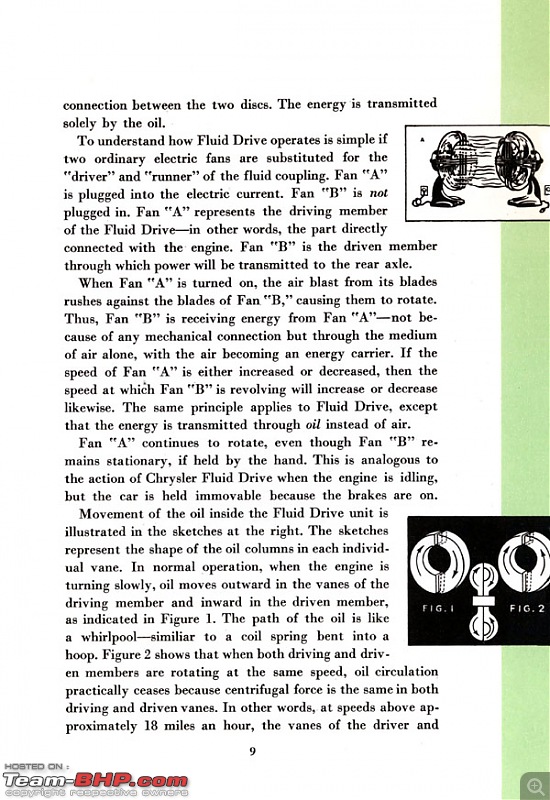    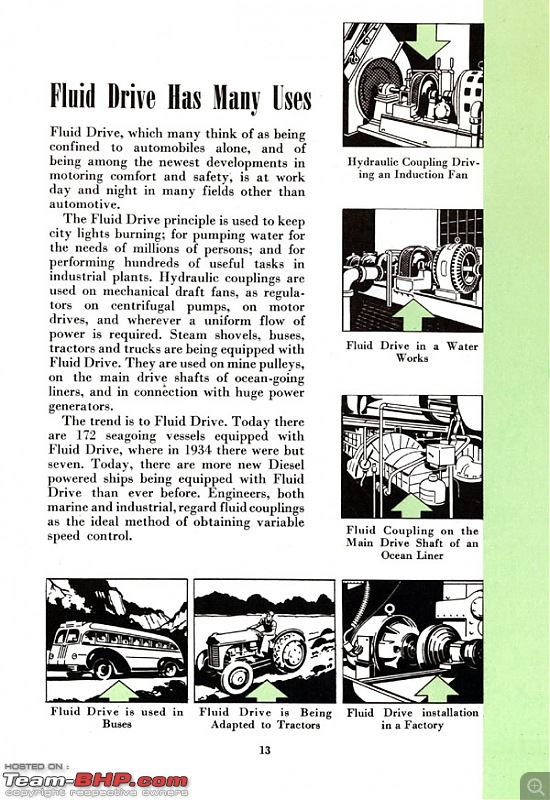     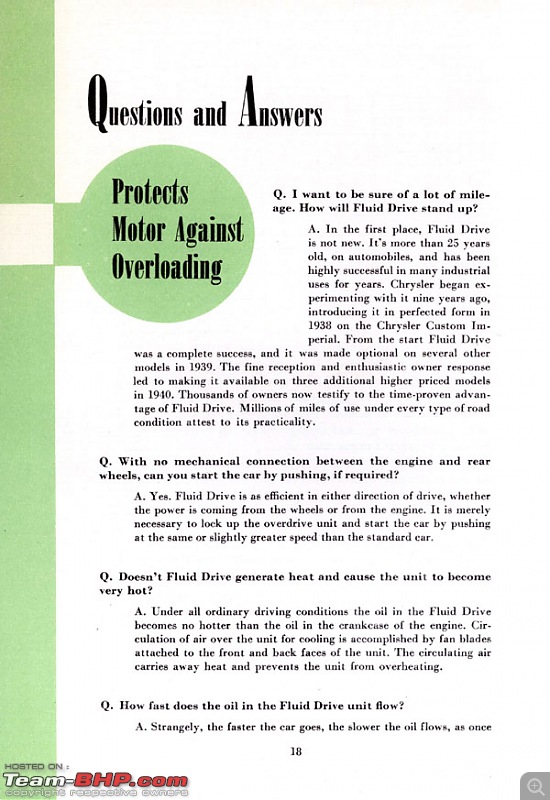     Courtesy the old car manual project. |
| |  (5)
Thanks (5)
Thanks
 |
| The following 5 BHPians Thank karlosdeville for this useful post: | foby.sebastian, glomus123, Shwetank, Sutripta, travancore |
| | #74 |
| Senior - BHPian | Re: Automobile Technologies of the Past - A Revisit Cornering Lights - The Forefathers The Tucker 48 which was made in the America's in the - you guessed it - in 1948 featured numerous innovations; amongst them was a 3rd directional headlight in the nose, which moved in the direction of the vehicle's steering input. The Tucker was thus fondly nicknamed "The Cyclops" by many In Europe, the Citroen DS 21 from the sixties also came with a directional headlamp which moved in conjunction with the steering wheel. |
| |  (1)
Thanks (1)
Thanks
 |
| The following BHPian Thanks arjab for this useful post: | Stanher |
| | #75 | |
| BHPian Join Date: May 2008 Location: Bangalore
Posts: 196
Thanked: 400 Times
| Re: Automobile Technologies of the Past - A Revisit Quote:
           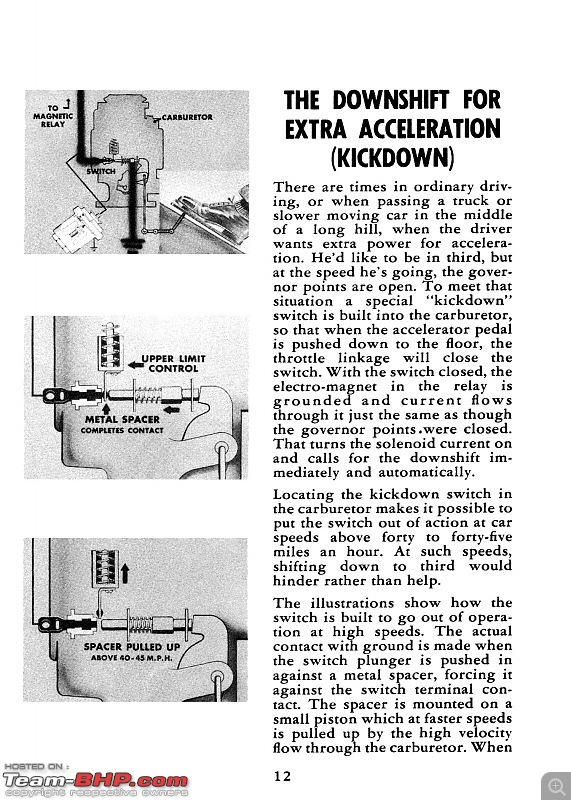  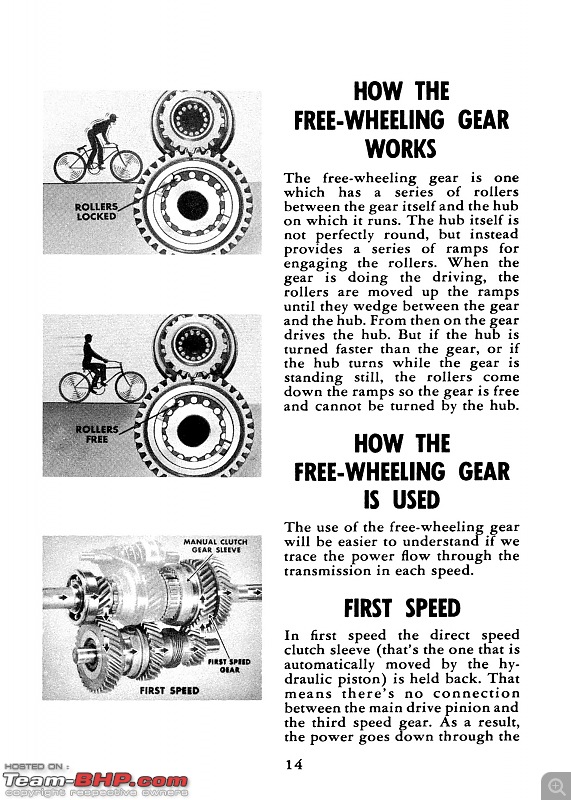 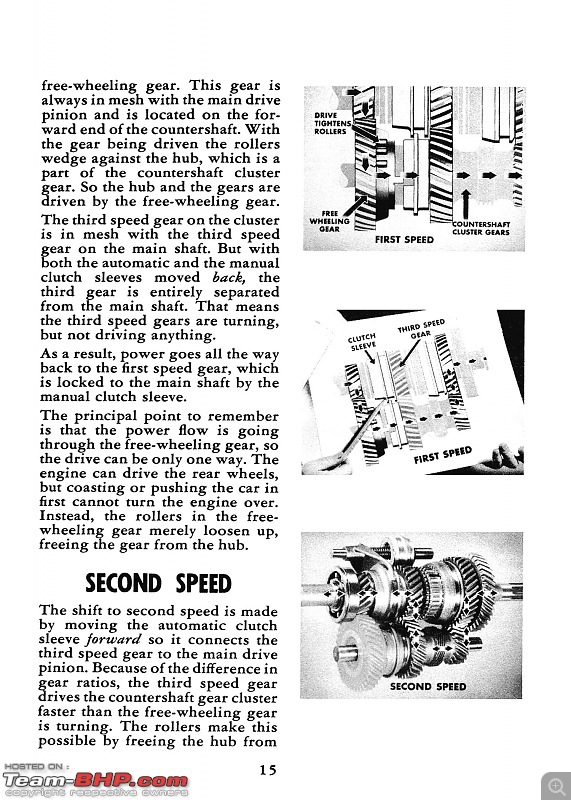   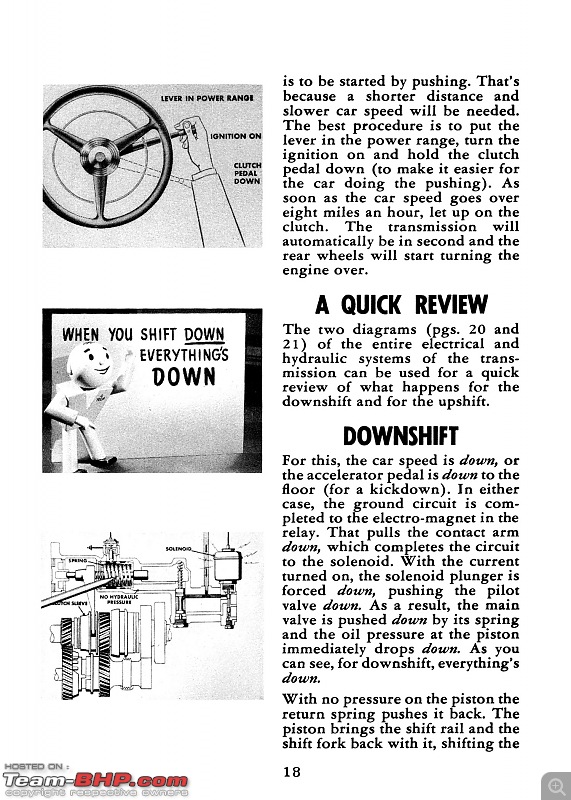   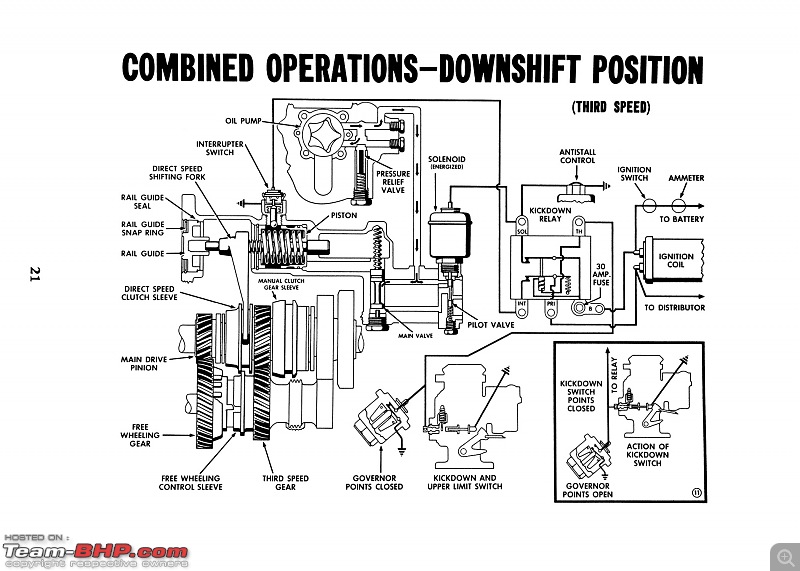    | |
| |  (5)
Thanks (5)
Thanks
 |
| The following 5 BHPians Thank thebulletboy for this useful post: | FINTAIL, glomus123, karlosdeville, KPS, Sutripta |
 |



